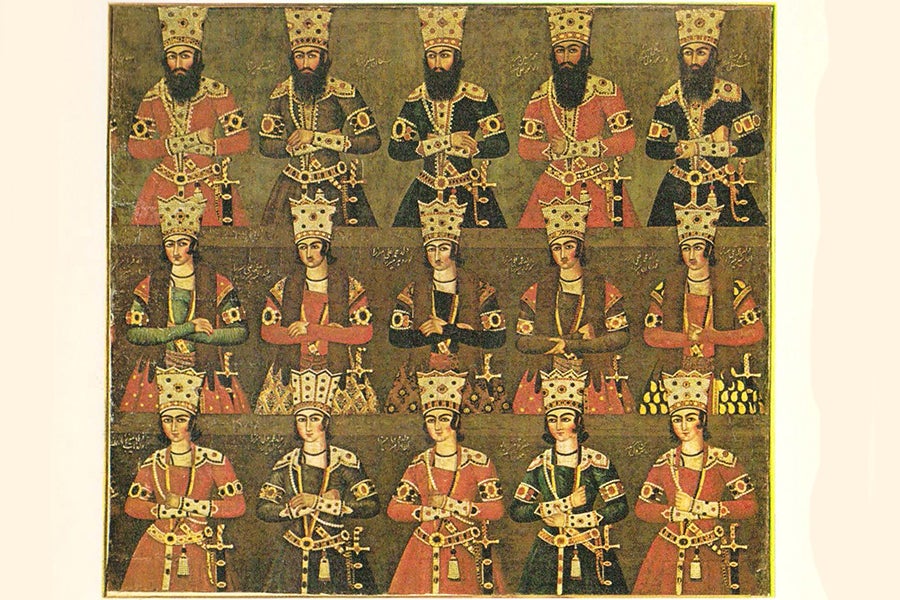From the Miniature to the Monumental:
The Negarestan Museum Painting of
the Sons of Fath Ali Shah
Layla S. Diba
Synopsis:
Persian painting is still largely understood as the “miniature,” an Orientalist term for small-scale, semi-abstract decorative manuscript illustration. However, nineteenth-century Iran under Qajar rule witnessed a proliferation of figural oil-on-canvas and wall painting. While progress has been made in the study of large-scale single paintings and portraits, the significance of monumental wall paintings is little understood. This talk presents for the first time a corpus of such works focusing on the sons and grandsons of Fath ‘Ali Shah (r. 1797-1834) now held in the Negarestan Museum, Tehran.
References:
Diba, Layla S. “An Encounter Between Qajar Iran and the West: The Rashtrapati Bhavan Painting of Fath ʿAli Shah at the Hunt.” In Islamic Art in the 19th Century: Tradition, Innovation and Eclecticism, edited by Doris Behrens-Abouseif and Stephen Vernoit, 281–304. Leiden: Brill, 2006. ![]()
Diba, Layla S. “Introducing Fath Ali Shah: Production and Dispersal of the Shahanshahnama Manuscripts.” In Shahnama Studies I, edited by Charles Melville, 239–58. Cambridge: The Centre of Middle Eastern and Islamic Studies, University of Cambridge, 2006. ![]()
Diba, Layla S. “Making History: A Monumental Battle Painting of the Perso-Russian Wars.” Artibus Asiae 66, no. 2 (2006): 97–110. ![]()
Diba, Layla S., and Maryam Ekhtiar, eds. Royal Persian Paintings: The Qajar Epoch, 1785–1925. London: I.B. Tauris Publishers in Association with Brooklyn Museum of Art, 1998. ![]()
Floor, Willem M. Wall Paintings and Other Figurative Mural Art in Qajar Iran. Costa Mesa, CA: Mazda Publishers, 2005. ![]()
Robinson, B. W. “The Court Painters of Fath ‘Ali Shah.” Eretz-Israel: Archaeological, Historical and Geographical Studies, 1964, 94*-105*. ![]()
Citation:
Layla S. Diba, “From the Miniature to the Monumental: The Negarestan Museum Painting of the Sons of Fath Ali Shah,” Khamseen: Islamic Art History Online, published 28 October 2020.

Layla S. Diba is an independent art advisor, scholar, and curator specializing in the art of 19th-and 20th-century Iran. She was the founding Director and Chief Curator of the Negarestan Museum in Tehran from 1975-78 and The Brooklyn Museum of Art’s Curator of Islamic Art from 1990-2000, where she organized the exhibition Royal Persian Paintings: The Qajar Epoch (1785-1925). She is the author of numerous publications and essays on Persian and Islamic art, including Turkmen Silver (2011), as well as editor and co-editor of Royal Persian Paintings: The Qajar Epoch (1785-1925) (1998) and Iran Modern (2013).


